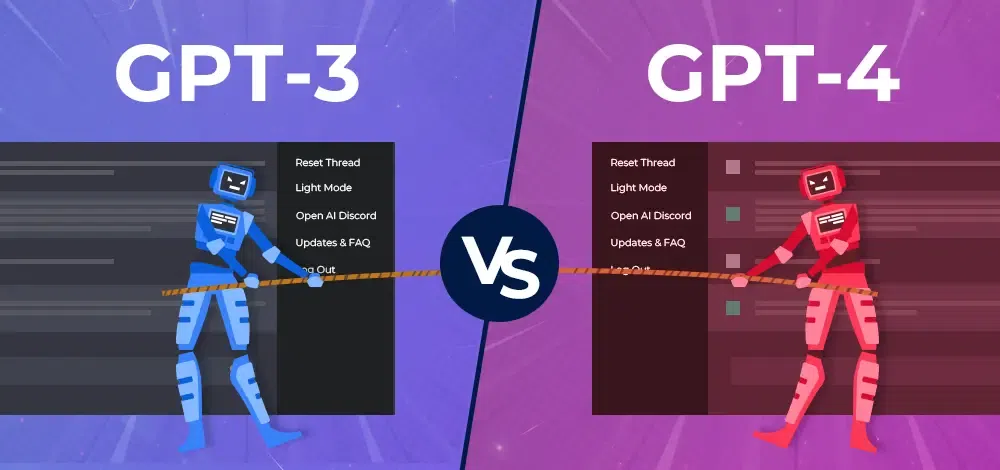Unveiling the Next Evolution: GPT-3.5 vs. GPT-4
Introduction
Artificial intelligence has been advancing at an unprecedented rate, transforming the way we interact with technology and expanding the boundaries of what machines can achieve. One of the most remarkable developments in recent years has been the evolution of Generative Pre-trained Transformers (GPT) models, with GPT-3.5 and GPT-4 emerging as the latest milestones. In this blog, we'll delve into the fascinating world of AI language models, exploring the differences and enhancements between GPT-3.5 and GPT-4.

GPT-3.5: A Brief Overview
Generative Pre-trained Transformers 3.5 (GPT-3.5) took the AI community by storm with its remarkable language generation capabilities. Developed by OpenAI, GPT-3.5 boasted an astounding 175 billion parameters, making it one of the largest and most powerful language models to date. It demonstrated the ability to perform tasks such as text completion, translation, question answering, and even creative writing with astonishing fluency and coherence.
GPT-3.5's architecture was built upon a transformer-based framework, which enabled it to process and understand vast amounts of text data. By pre-training on diverse sources of text, GPT-3.5 acquired a deep understanding of syntax, grammar, and semantics, allowing it to generate human-like text across a wide range of topics and writing styles.
Enter GPT-4: A Leap Forward
GPT-4 marks the next chapter in the evolution of AI language models. With each iteration, AI researchers at OpenAI continue to push the boundaries of what's possible. GPT-4 is expected to build upon the foundations laid by GPT-3.5 and introduce several enhancements that further elevate its performance and capabilities.
Scale and Parameters: One of the key differences between GPT-3.5 and GPT-4 lies in their scale. GPT-4 is anticipated to feature an even larger number of parameters, potentially exceeding the already staggering 175 billion of its predecessor. This increased scale could lead to improved text generation, more accurate understanding of context, and finer nuances in language.
Contextual Understanding: GPT-4 is likely to exhibit an enhanced ability to grasp complex contextual cues. This could result in more coherent and contextually relevant responses, making interactions with the AI model feel even more natural and human-like.
Few-Shot and Zero-Shot Learning: While GPT-3.5 showcased impressive few-shot and zero-shot learning capabilities, GPT-4 could take this a step further. Few-shot learning involves training the model with just a few examples, while zero-shot learning involves performing tasks with no specific examples. GPT-4's advancements in this area could make it even more versatile in adapting to new tasks and challenges.
Ethical and Safety Considerations: As AI models become more powerful, the importance of ethical and safety considerations also grows. GPT-4 is likely to include enhanced measures to prevent bias, misinformation, and inappropriate content generation. OpenAI's commitment to responsible AI development is expected to be a cornerstone of GPT-4's design.
Conclusion
The evolution from GPT-3.5 to GPT-4 represents a significant leap in the capabilities of AI language models. As we anticipate the arrival of GPT-4, it's clear that AI is continuing to redefine human-machine interactions and revolutionize various industries. While GPT-3.5 demonstrated the immense potential of AI-generated text, GPT-4 is poised to further blur the lines between machine-generated and human-generated content. As researchers and engineers at OpenAI strive to unleash the full potential of GPT-4, we can only imagine the incredible applications and possibilities that lie ahead in the realm of artificial intelligence.
Comments
Post a Comment